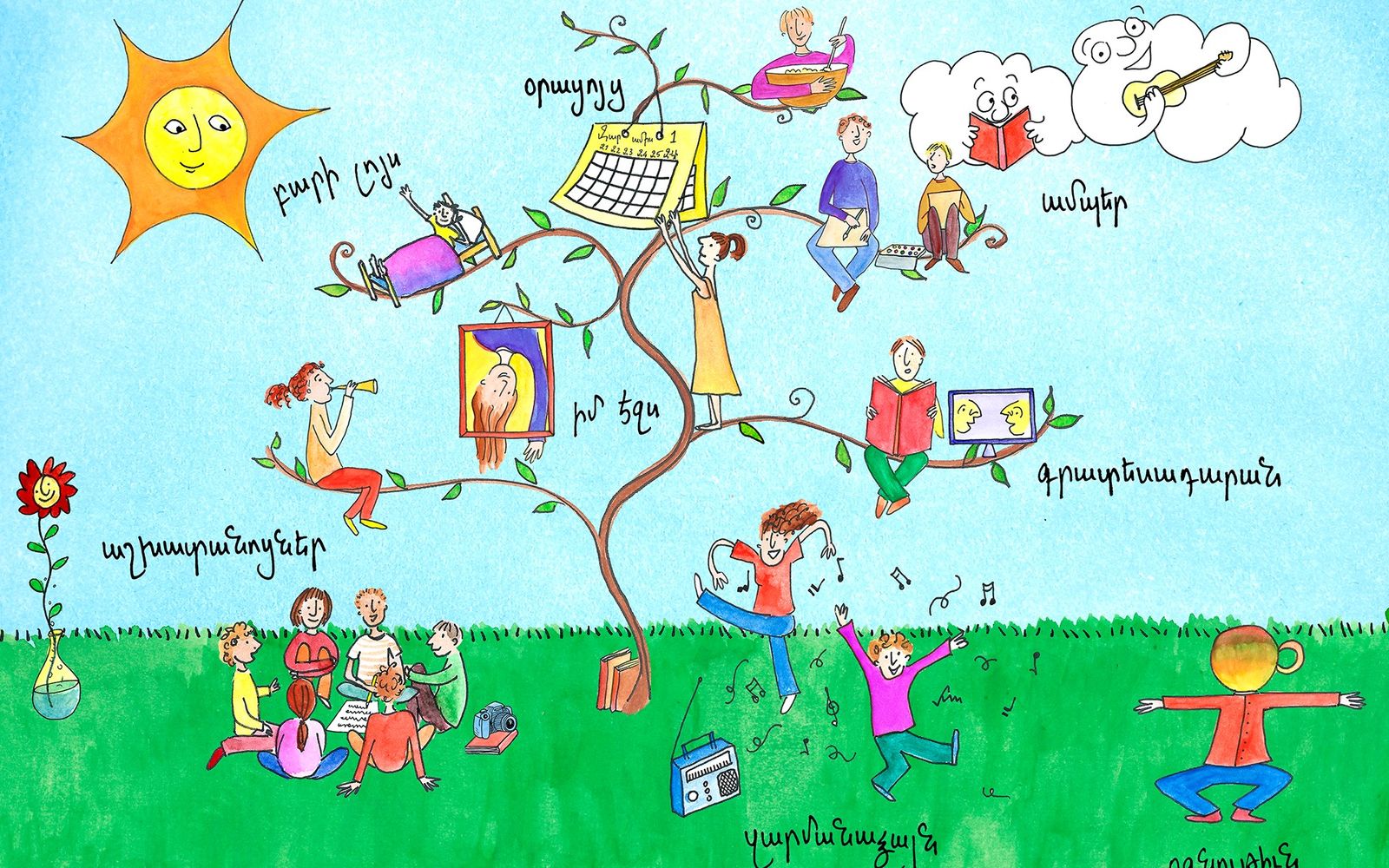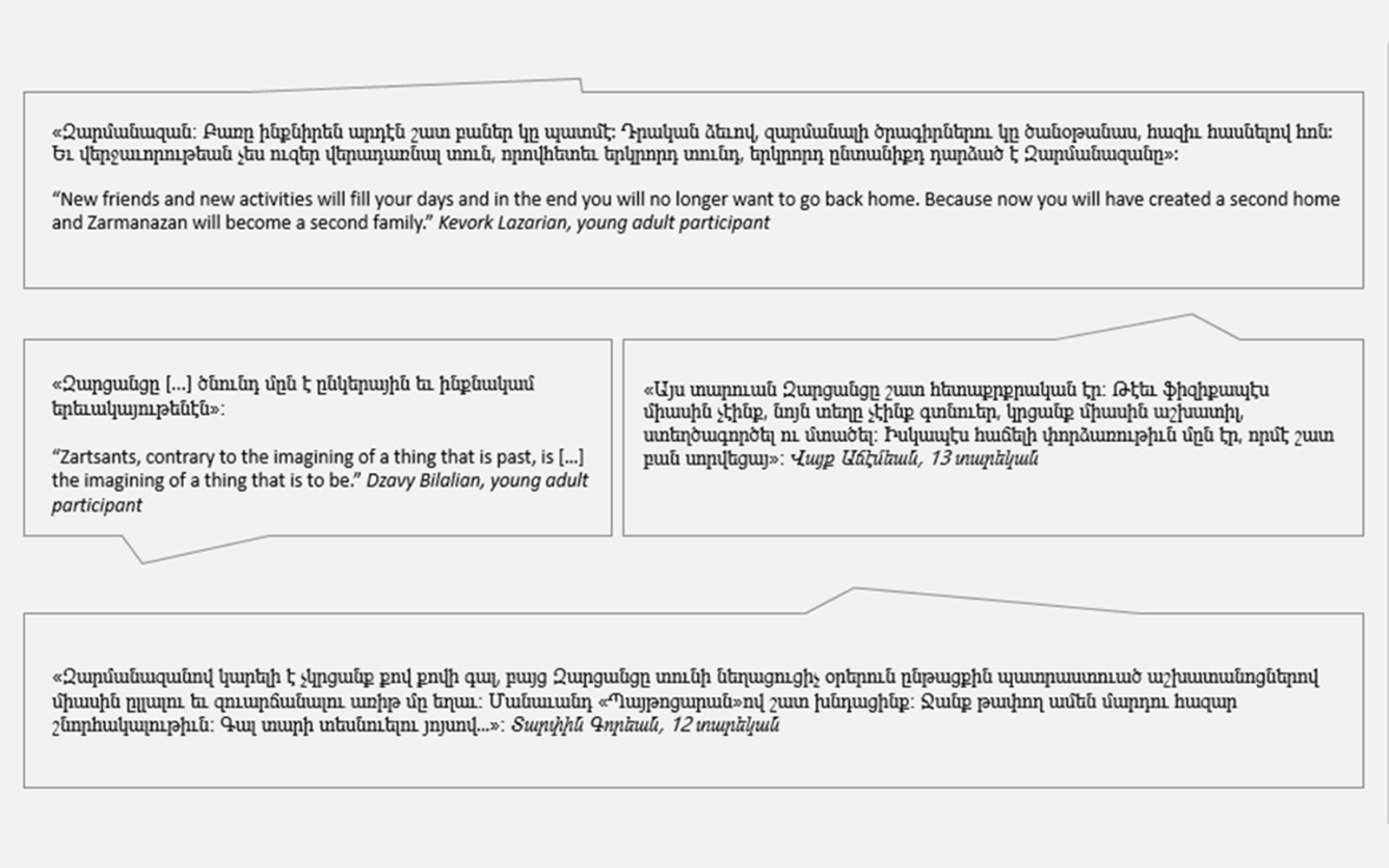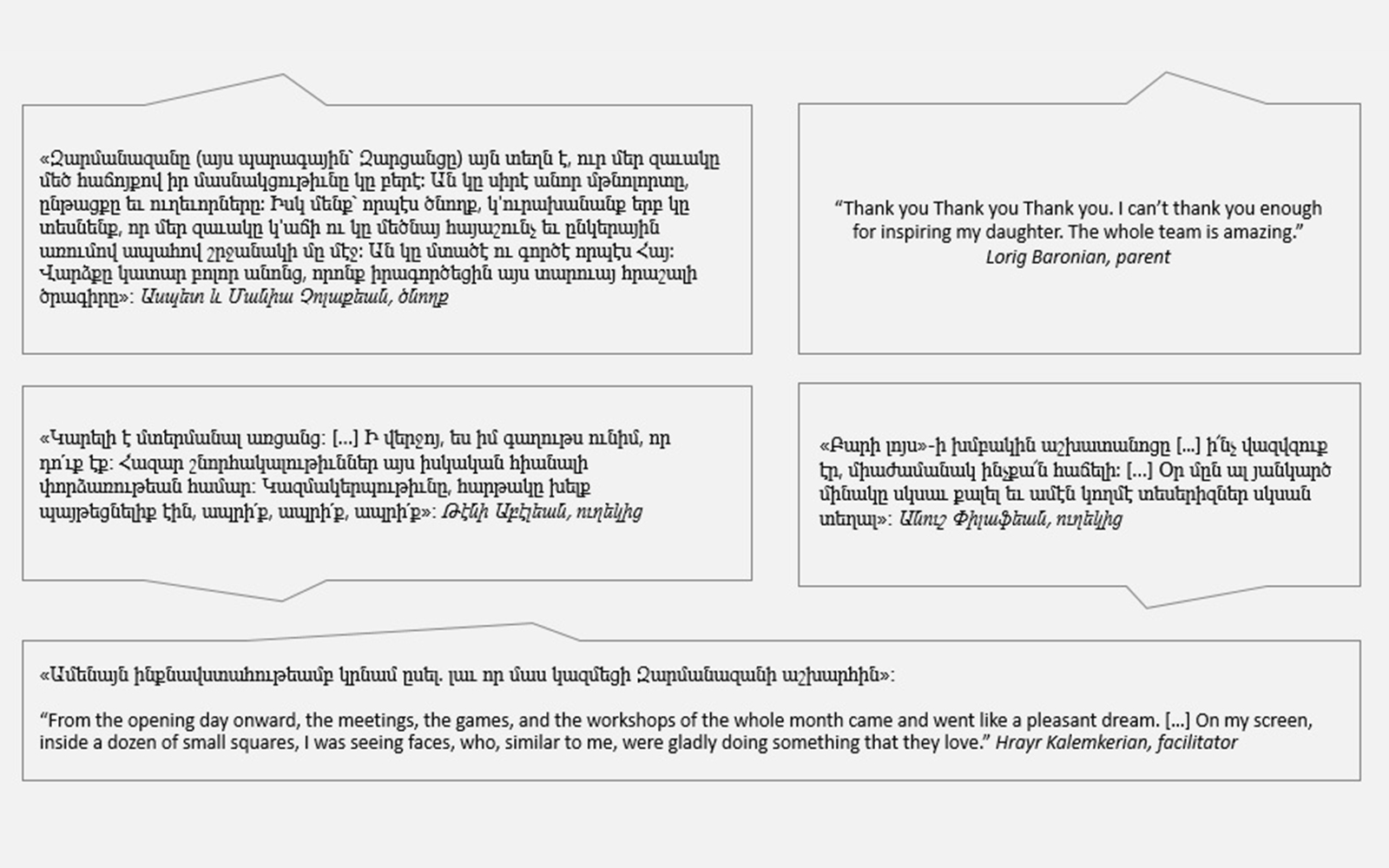Western Armenian Language Immersion Online

Can a language immersion programme for children and young adults take place exclusively online? This was the question the Armenian Communities Department of the Calouste Gulbenkian Foundation had to grapple with when Zarmanazan 2020 had to be cancelled due to the Covid-19 pandemic. After some hesitation, it answered “yes, we must try!” It thus entered some uncharted territory to make it happen.
The physical gathering of an educational summer “camp” that inspired children and young adults (10 to 24 years old) to learn and create in Western Armenian had to be adapted to the digital domain. Special care had to be taken to transport online the sense of familiarity, creativity and constant engagement, while keeping the language at the heart of the programme. The new initiative was called “Zartsants 2.0,” taking the “zar” from Zarmanazan and “tsants” from the Armenian word ցանց, meaning network or web. The “2.0” symbolised both the difficult year of 2020 and the fact that Zartsants was building on Zarmanazan.
Intensive online brainstorming meetings between the facilitators and the organisers started in March 2020, once it became clear that the physical gathering was not going to take place. There were many challenges that needed to be overcome: finding the right balance between screen time and off-screen time, designing participative activities online, ensuring ongoing engagement over a period of several weeks, mixing workshop groups virtually, time zones differences, and, needless to say, making sure that Western Armenian would “naturally” flourish in the environment being created. It was important from the start to get feedback from the participants to ensure their commitment to the new format and to obtain parental approval.
It was essential to design a user-friendly personalised online platform specifically for Zartsants 2.0. Participants could update through the platform their profiles, gather multimedia information regarding the various workshops, register for activities and consult their personalised timetables. All participants had to take part in at least three workshops per day (although most of the time they wanted to take part in more). The workshops were held via Zoom with an average duration of 40 minutes. Depending on the content, they were either for a specific age group or were mixed-aged to allow for cross-age interaction and learning. While the workshops were for participants only, a blog was created to inform and involve parents.
All workshops were exclusively created for Zartsants 2.0 and changed every week. Activities included, among others, cooking, music and singing, movement expression, yoga, origami, crafts, drawing and painting, photography, science experiments, writing and reading in Western Armenian (including literature and philosophy), theatre with small objects, film making, an in-house newspaper (“Zarmanadoon”) and radio show (“Zarmanatsayn”). There was even a workshop, with five regular participants, on mathematical vocabulary in Armenian!
The day in Zartsants 2.0 would start with a daily surprise, a “Good Morning” video created by selected participants, and it would end with an exciting interactive live stream show on YouTube that included games, in-house concerts and stories of daily experiences at the virtual “camp.”
Since the online platform functioned completely in Armenian, a range of digital Armenian vocabulary was made available. Everyday participants learned “the word of the day” adding to the searchable online dictionary with words such as “download” (ներբեռնել), “link” (յղում) and “to charge” (լիցքաւորել). The dictionary grew to 100 words. In addition, 600 related terms were translated to make the Zartsants interface fully Armenian. In short, Zartsants created a space in which the Armenian language was fully integrated into the digital sphere.
Zartsants 2.0 had 50 participants. Of these, 33 were in the 10 to 17 age group, and 17 were in the 18 to 24 age group. The programme was animated by 22 facilitators and supported by a very small team of technical experts. Participants “came” from the following countries: Argentina, Armenia, Belgium, Canada, France, Greece, Lebanon, Portugal, Turkey, United Kingdom and the United States. In a period of four weeks (12 July to 7 August), 1200 images and 250 videos were produced, 96 workshops were held via 670 zoom gatherings for a total of 64,000 minutes. 300 pages were designed on the online platform and 25 blog posts were written for the parents, 70 of whom used the platform on a daily basis (in addition to all the participants and facilitators).
Zartsants 2.0 motivated youth and parents to speak Western Armenian daily. Many families around the world came together to enjoy the live stream events, read the blog, or watch the “Good Morning” videos. Despite the lack of a physical gathering, a strong feeling of familiarity and empathy was created through vast distances and multiple time zones.


“Zartsants 2.0 relied on creativity, fun and motivation as propellers of the Armenian language,” said Razmik Panossian, the Director of the Armenian Communities Department. “It gave us a whole new perspective and experience regarding engaging online activities for language learning, day in and day out. We will certainly look at its success, and explore the possibilities of supporting similar initiatives in the future,” he concluded.
Zartsants 2.0 took place completely online from 12 July to 7 August. Its participation was limited to those who had already registered for Zarmanazan 2020. Zartsants 2.0 was organised by L’association Mille et un Mondes (France), with the support of and in close collaboration with the Calouste Gulbenkian Foundation.
